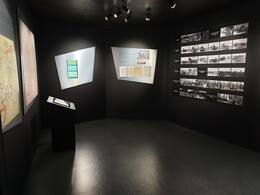Air-assisted Edgars Auniņš's memories of the end of World War II Lake Ezere
Excerpt from a memoir about the surrender of Kurzeme in May 1945, from the memoirs of Air Lance Corporal Edgars Aunins
“...On the evening of May 9, we entered the courtyard of a large house, where a half-platoon of Russian front-line soldiers was already ahead. There was no alarm. We showed our empty pockets and offered to empty the contents of our sailors' bags. That was enough. The lieutenant waved his hand away. Among the Russian soldiers were mainly elderly men, who watched and questioned us with some surprise. Ivan Klementyev from Kraslav was with us. We couldn't have asked for a better interpreter. We all spent the night together in the large family room. We exchanged canned goods - we gave them German canned goods, they gave us American canned goods. Together we all drank two glasses of vodka: one for all those who fell in the war and the other for all the surviving war participants. From that time on, I will never refuse to drink these two glasses on May 8 or 9 for the rest of my life. And I want to emphasize: there was no hatred between the gray front-line soldiers!”
published in "Illustrated History", May 2015 issue
Related timeline
Related topics
Related objects
Ezere local history repository “Muitas Nams” (Customs House)
The Ezere Customs House is located in Ezere near the Saldus-Mažeikiai highway at the Latvian-Lithuanian border. The act of surrender of the German Army units ‘Kurzeme’ (Kurland) surrounded in the so-called ‘Courland Pocket’ was signed in this building on 8 May 1945. It is believed that World War II actually ended in Ezere. The customs house has an exhibit covering the events of the end of World War II and exhibits detailing the history of Ezere parish from ancient to modern days. In the morning of 7 May 1945, the commander of the Leningrad Front, Marshal L. Govorov, sent an ultimatum to the command of the army group ‘Kurzeme’ to lay down arms. The act of surrender was signed by the involved parties on May 8 and it detailed the procedure of surrender, weapons collection points, documents and information to be submitted and other practical measures.






